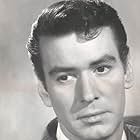Félix Lope de Vega Carpio, one of the main writers of the Spanish Golden Century, created a strong femenine character in his verse play "La moza de cántaro" (The pitcher´s maid) ("cántaro" is a Spanish baked clay jug to carry and drink water and keep it cool).
The film version, starring Paquita Rico as Doña María, a lady who won´t hesitate to disguise as a man to avenge an offence inflicted to his old father by an ambitious suitor, does not retain the play´s witty dialogues, but is effectively (and freely) adapted into a costume adventure. Here our heroine dresses as a man to fight a duel at night, is recognised and must run away and live on her wits, aided by a gentleman who believes she is her absent brother. Unabashed by this turn of fortune but not at all prepared to share a room with a man, she runs away once more and travels to Madrid, where King Felipe IV (Ismael Merlo) resides. There, working as a tavern maid and keeping her self-pride high, she will fight both for her liberty and choice of man keeping her family´s honor.
When this picture was made in 1954, the Spanish cinema under Franco´s regime had favored and accumulated a tradition of historical (and often grandiloquent and dramatic) pictures. This is no exception, but blends history with comedy and folklore because of its leading lady, Miss Paquita Rico.
With a few songs to show her singing and dancing talents wisely interspesed along the story, her lively personality fits the character well, and gives strength and spark to the action, which really evolves around her as her gentleman suitor (Peter Damon) is not precisely sparkling. Florián Rey was an experienced leading director of folklorical themed movies in both pre- and post-war Spanish cinema,and he contributes to this film being not an outstanding but a well made one, both entertaining and with a good rhythm. Rey had been married to Imperio Argentina, one of the most famous actresses of Spanish cinema and a famed tonadillera (popular songs singer), and they made many similar themed and successful pictures together. The settings by Sigfied Burmann greatly help in achieving the ambience. But the main merit of this picture should go to Lope de Vega, who created one such interesting, amusing and modern play. Read it and find out for yourselves.
















